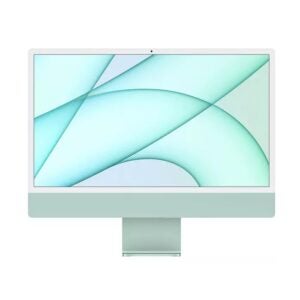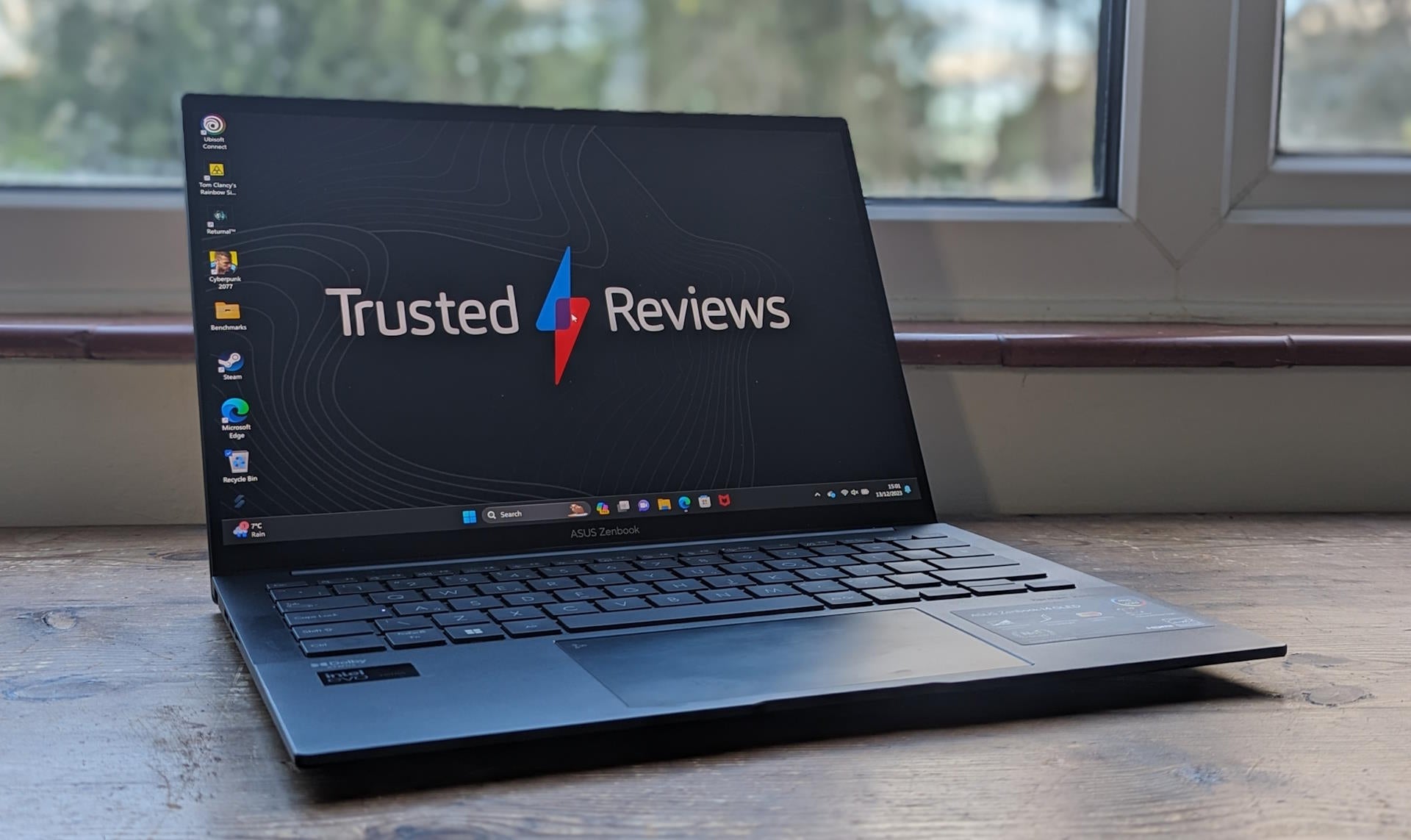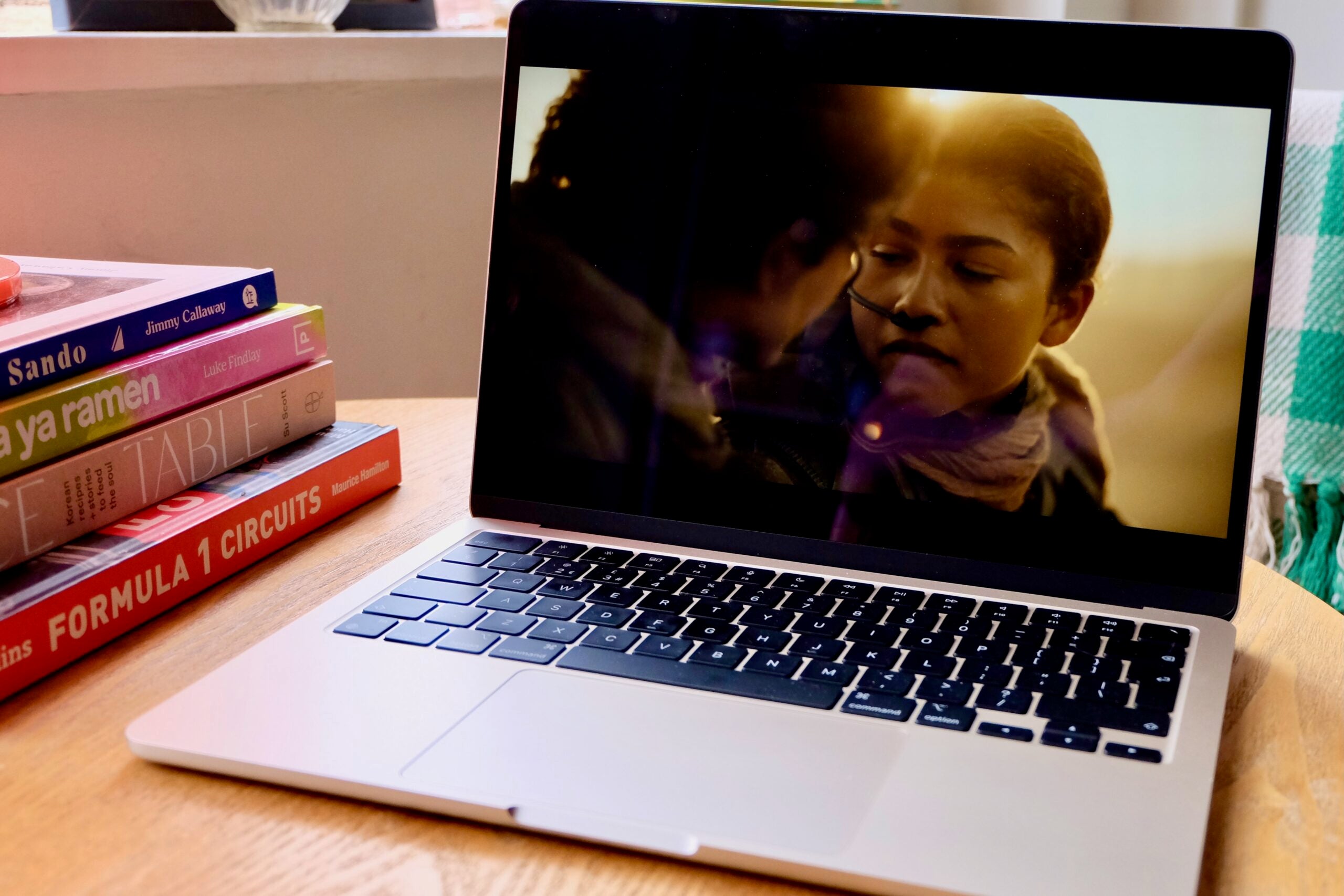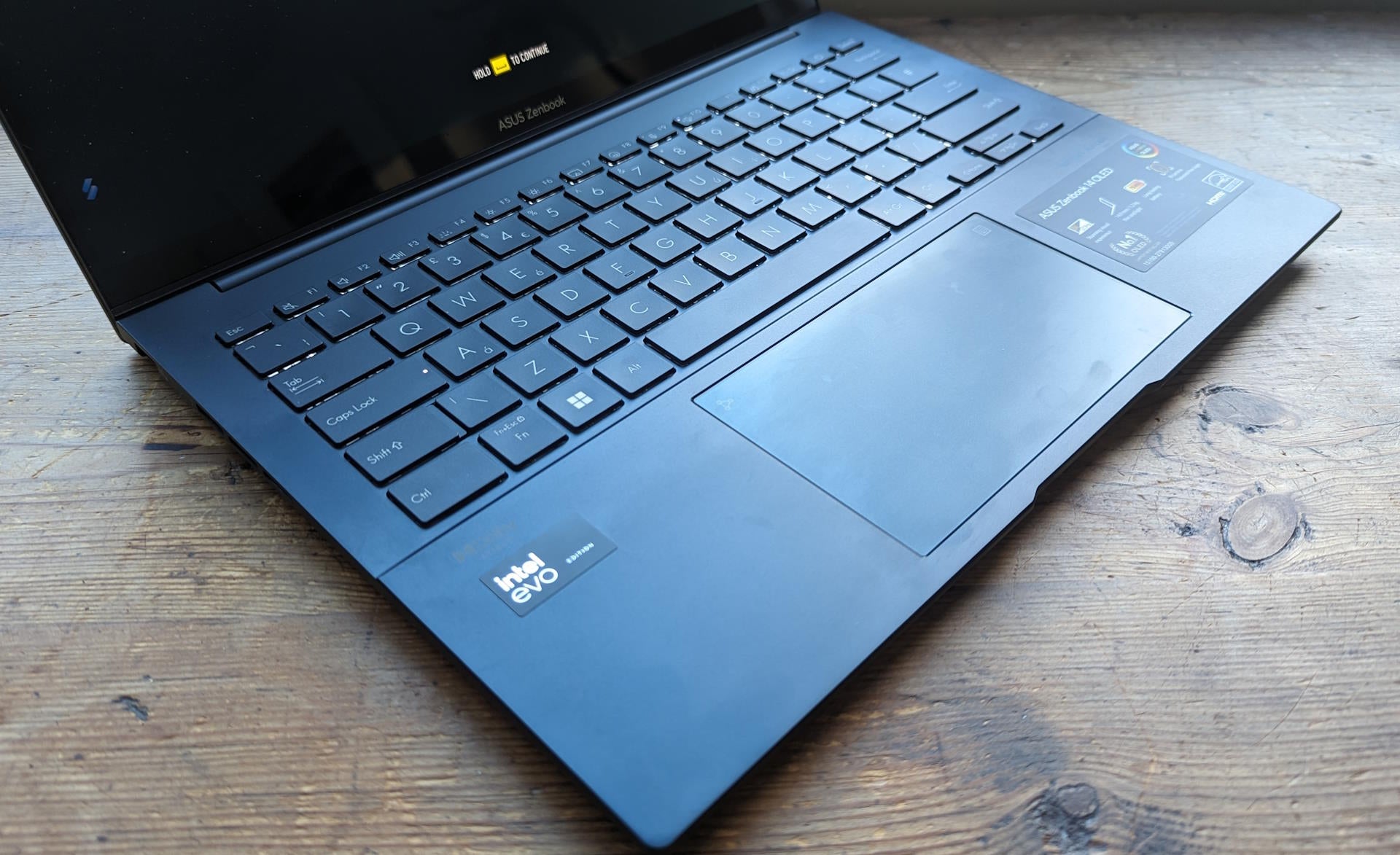If you’re looking for some of the best thin-and-light laptops on the market, these two devices are the pick of the bunch in 2024. We’ve fully reviewed the Apple MacBook Air M3 and Asus Zenbook 14 OLED. Here’s how they compare.
2024 is shaping up to be one of the most interesting years for the best thin-and-light laptops around. Intel Core Ultra and AMD Ryzen’s 8000 series have offered key boosts while the Apple M3 has brought some extra juice to Macs. The unknown quantity of the Snapdragon X Elite is closing in too. For now, the Zenbook 14 OLED and MacBook Air M3 are our top-rated machines for most people. These are what we think are all the key points of difference after our thorough testing.
Price and Availability
The pricing for the MacBook Air varies greatly depending on your desired configuration, as well as if you opt for the 13-inch or 15-inch models. The range starts at £1099/$1099 for the base 13-inch model, with the 15-inch starting at £1,299/$1,299. There are a lot of configurations so we won’t go through every single one of them here but the basics are that boosting up to a faster GPU will cost you £100 then going from 8GB unified memory to 16GB and then 32GB will cost you £200 for each step up. For a larger SSD, it costs £200 to go from 256GB to 512GB then again to 1TB before it’ll cost you another £400 for the extended rise to 2TB. Faster power adapters will also cost you £30.

Get the M1 iMac for £799.97
Currys is selling the iMac at a huge discount while stock lasts, with a price of £799.97.
- Currys
- Limited stock
- Now £799.97
By comparison, things are simpler with the Asus, only offering one size, a smaller set of configurations and less expensive upgrades. The Asus Zenbook 14 OLED starts at £1,049 in the UK for the Intel Core Ultra 5 125H CPU, 16GB RAM and 512GB SSD model. In the US, the price varies, with a starting price of $1,299.99 on the Asus website for the same model but, at Best Buy, you get the more advanced Core Ultra 7 155H, 16GB RAM and 1TB SSD version for less at $1,049.99. In the UK, you can bump up the storage to 1TB for £200 then, with an additional £100, you can venture up to 32GB RAM and that raises the processor up to the Core Ultra 185H.
Design
Apple has long been the king of lightweight luxury design in the laptop space but brands like Asus are catching up. Both these laptops are super thin and light, with the MacBook Air coming in at 11.3mm thin and 1.24kg for the 13-inch model then 11.5mm thin and 1.51kg for the 15-inch. Next, the Asus Zenbook 14 OLED measures 15mm thick and 1.29kg. So, the MacBook Air retains the edge in terms of thickness across both models but the 15-inch does come in a tad heavier.


The Apple and the Asus feature all-metal designs, with the MacBook Air featuring the shimmering signature metallic look that the range has had for so many years, even with the new flatter design replacing the wedge. The Asus stands out a bit more with a logo sprawled across the lid, which feels ceramic-like in texture.
There’s a clear winner on the ports front, with the MacBook Air only offering two Thunderbolt 4 ports and a headphone jack. But, with the Zenbook 14 OLED, you get the two Thunderbolt 4, one USB-A 3.2, an HDMI 2.1 and a headphone jack.
These are two luxury laptops that, despite both being all-metal, the MacBook does have the more unibody and symmetrical feel that comes with giving off the impression it was crafted into one piece of metal. The Asus offers something a little different and intriguing. So, it’s a mater of taste here.
Screen and Sound
The new MacBook Air M3 failed to bring about a display upgrade, meaning you still get the same 13.6-inch 60Hz 2560×1664 / 15.3-inch 2880×1864 Liquid Retina panel. Now, we were big fans of the screen in our review, touting just how sharp and bright it can get. It doesn’t stand out as being poor in anyway, but Asus has just taking things a bit higher.


Unlike the MacBook Pro and its Mini LED technology, the MacBook Air lacks such an upgrade. Another tech standard it lacks is OLED, which the Zenbook 14 OLED does offer. As such, the Asus provides a display that offers truly luxurious and vibrant colours. There’s also a slightly higher resolution at 2880×1800 and a 120Hz refresh, with the latter providing that smoother scrolling experience.
The Asus Zenbook 14 OLED can’t quite keep up with the excellent MacBook Air when it comes to audio though. We dubbed the former laptop as a passable player of multimedia while the Apple is simply a wondrous device in terms of how full the sound is from such a diddy machine.
Performance
Since the inception of the Apple M-series, the MacBook Air range has stormed ahead in terms of its balance of efficiency and power. Intel Core Ultra aimed to clap back and, to some extent, it has. Our experience with devices like the Zenbook 14 OLED has shown the generation offers a bit of extra battery life and a bit of extra graphical performance when compared with the MacBook Air.
So, on performance, the Zenbook 14 OLED is able to stand toe-to-toe with the M3 in multi-core workload testing but the Apple still holds the lead across most tests. The results aren’t hugely different, meaning both these laptops will dominate productivity work and can comfortable tackle basic to intermediate 4K video editing. However, Apple still has the edge for offering the same performance off power as it does on, and it does it all without a fan. To compare, we did find the Zenbook 14 OLED to offer a good amount of fan noise when truly pushed, something the Apple would never do.
Of course, as a Windows laptop, the Zenbook 14 OLED offers better access to gaming. We found the new Core Ultra chip enabled around 30fps at Medium settings in Returnal then 67fps at Ultra settings in the Rainbow Six Extraction first person shooter title.
Software
For software, you’ll find the traditional MacOS experience on the Apple MacBook Air M3, with Sonoma being the latest iteration. There weren’t any huge upgrades wtih its introduction, with new widgets being the highlight.
The Asus Zenbook 14 OLED offers a few more dedicated features from Asus software, such as MyAsus for managing the device, Screen Xpert for organising apps across different desktops and GlideX for screen sharing. The Asus also uses the Core Ultra’s AI NPU to take advantage of the new Windows Studio effects, allowing native background blur, auto-framing and auto-eye contact features across your video conferencing apps.
Battery Life
The MacBook Air remains the leader on the market in terms of thin-and-light battery life, managing between 15 and 18 hours across our testing. It’s a stunning feat that lets you go well into a second day off power without having to worry about your battery.


The Asus Zenbook 14 OLED does benefit from the Core Ultra boost, coming in at just under 13 hours. It is a solid number and many people will be happy with that result as Windows laptops of the last couple of years have often floating between 8-11 hours on the productivity side of things.
Final Verdict
As always with a MacBook and a Windows laptop, especially when both are top quality like these two, the decision is likely to come down to whether you want to use MacOS or Windows. The latter, of course, offers more access to games and an extra level of freedom.


It’s hard to fault either of these on performance, with the MacBook Air M3 and Asus Zenbook 14 OLED being extremely capable productivity taskers that won’t blink for your average web browsing and multi-tasking. For creative work, both of these will also suit budding content creators. But, the MacBook Air offers that extra portability, with supreme power when unplugged, as well as that fanless design.
The designs will again come down to personal preference. The MacBook Air has a signature style that you’ll know if you’ll like, with a slightly higher dose of luxury that the Asus. But, the Asus offers something more interesting and extra ports.


The Asus Zenbook 14 also has the glorious OLED display that takes it above the MacBook Air in terms of viewing experience. It’s an joy to look at whether you’re doing some light gaming, creative work or taking in some videos.
Ultimately, we gave both of these laptops 4.5-stars and it is extremely hard to separate them in objective fashion. Instead, it’ll come down to your subjective opinion on our testing and verdicts to decide if the Asus or Apple is right for you. Price may play a key factor, with the Apple providing a lower starting price but quickly rising when you’d like to upgrade while the Asus offers a strong base specification.




